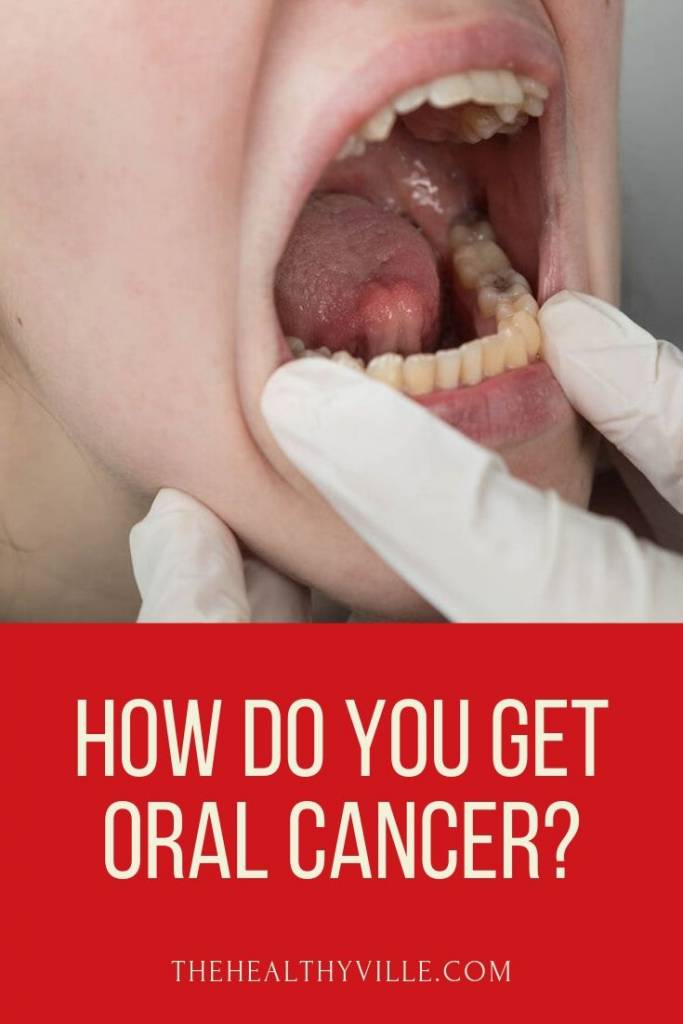How do you get oral cancer, if you’re brushing and flossing your teeth regularly after each meal? Well, there are some risk factors you should be aware of and avoid!
Oral cancer is a serious disease that can affect any part of the oral cavity, including the throat. Why does it develop? Today we review its main risk factors.
Oral cancer is a disease due to an abnormal proliferation of cells in any of the tissues of the mouth. In turn, it is one of the cancers corresponding to the category called “head and neck cancers.” Do you know the risk factors for oral cancer?
This disease can appear anywhere in our body. Some types of cancers, such as breast, colon or skin cancers are very common and the general population knows about their existence. However, oral cancer is much less known. Within the oral cavity, the most common areas where it can occur are:
- Language
- Tongue floor
- Salivary glands
- Gum
- Palate
- Lower lip
Although the mouth is an accessible area, and that we can observe ourselves with a mirror, most patients with this type of cancer receive a diagnosis in late stages, which makes treatment and prognosis much more difficult.
For this reason, it is important to know what your risk factors are and take action on those that are modifiable. Discover them!
How do you get oral cancer?
So let’s answer the question: how do you get oral cancer? According to a publication in the Journal of Oral and Maxillofacial Surgery, oral cancer is a multifactorial disease, that is, there are several factors that increase the risk of developing it. We detail them below.
-
Tobacco
With the habit of smoking, all the chemicals found in tobacco smoke come into contact with the mouth. These chemicals, such as cadmium, arsenic or methanol, are carcinogenic and can cause alterations in the tissues with which they contact, causing lesions.
In addition, the heat produced by the combustion of tobacco accelerates these morphological changes. The risk of cancer from smoking increases as the dose of tobacco increases and the time it takes to smoke. It also increases if the quality of tobacco is lower.
Smoking is one of the risk factors for oral cancer.
Toxins in cigarettes have been widely associated with an increased risk of oral cancer. Make sure you quit smoking if you want to lower the risk.
-
Alcohol
Together with tobacco, it is one of the most determining risk factors. If you combine both factors your risk increases exponentially, having a 38 times more chance of suffering it.
Alcohol is an irritant of the mucous membranes, it also causes the degradation of ethanol in acetaldehyde. Acetaldehyde has shown that it has a clear relationship with oral cancer, as seen in a study published in the journal Cancers.
Poor hygiene increases the degradation of this compound and increases the risk of oral cancer in people who regularly consume alcohol.
-
Diet
Deficiencies in the diet increase the risks of developing oral cancer. Specifically, the lack of vitamins and minerals. Lack of iron can cause mucosal atrophy and vitamin E deficiency decreases control of free radicals, and can convert healthy cells into tumor cells.
Eating fruits and vegetables significantly reduce the risk of developing oral cancer. The so-called Mediterranean diet, based on the consumption of fruits, vegetables, olive oil, cereals and fish, with low amount of meat and dairy is a protector of oral cancer.
-
Environmental factors
One of the most important environmental factors, and which has more relationship with cancer, are solar radiation. The area where they affect most is the lower lip, producing brown spots called keratosis.
Heavy metals, such as chromium or nickel, can also be found in environmental factors, which can be found in water filtered on the ground with these metals.
-
Bacterial infections
Bacteria naturally produce inflammation of the tissues. This inflammation implies an alteration in the natural cycle of the cells. During this alteration of the cycle, some type of mutation may occur that involves the development of the tumor.
In addition, substances that discard bacteria are also toxic to our body. In the biopsy of tumors there are largely remains of bacteria related to candidiasis, pneumonia or different types of fungi.
Poor hygiene, as always, also plays its part, since there is an association between the number of missing teeth and oral cancer.
-
Viral infections
Viruses have been shown to cause cancer between 10% and 15% by causing damage to cellular DNA during replication. The virus with which this relationship has become more evident is with the Human Papillomavirus (HPV) and with herpes simplex virus.
The highest percentage of oral cancers are caused by lesions that were previously in the oral mucosa, called premalignant lesions. These lesions should always be checked and, if after 15 days of evolution do not improve, you should always consult a doctor to rule out possible malignant lesions.
-
Genetic factors
In addition to the aforementioned risk factors, genetics is very important. A genetic mutation can lead to a tumor, and this genetics may be altered by environmental factors, such as diet, sun exposure, tobacco, alcohol, and so on.
In summary
Oral cancer prevention is essential. The dentists in the annual reviews, apart from reviewing cavities, periodontal disease and other pathologies of the mouth, also perform a general check to rule out possible premalignant lesions.
Home control of wounds or spots is also important. And, if we also know the risk factors of oral cancer, we can take a safer control of them.
Don’t forget to SHARE the answer to the question how do you get oral cancer with your friends and family on your social networks!

